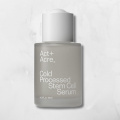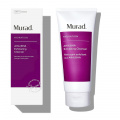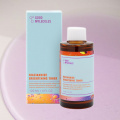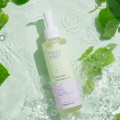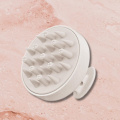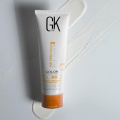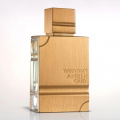How to Detangle Matted Hair Without Damage: An Expert Guide
If you’ve ever found yourself struggling with tangled hair, then you know the frustration. Luckily, we are here to guide you on how to detangle matted hair the easy way.
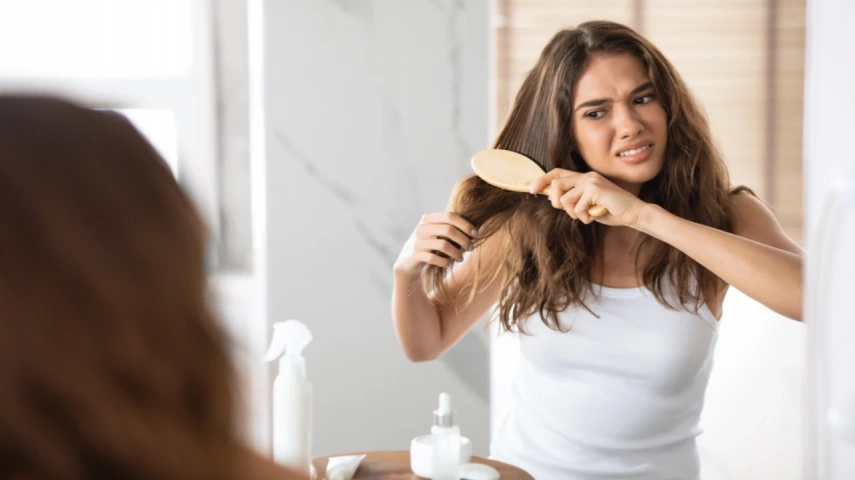
Dealing with tangled hair can be a frustrating and time-consuming task, but fear not! We are here to provide you with tips and techniques on how to detangle matted hair. These will help you conquer those knots and prevent future matting. Whether you have long, curly, or textured hair, this article will equip you with the knowledge and tools needed to achieve smooth, manageable locks. Matted hair occurs when strands tangle and become tightly knotted together. There are several factors that contribute to this. Moreover, they can be effectively managed with proper guidance and we are here to provide that. Thus, it's time to say goodbye to tangles and hello to beautiful, healthy hair!
What Is Matted Hair and What Causes It?
The term matted hair refers to clumps of entangled hair strands. Over time, these develop into solid, knotted hair clusters. They are more difficult to untangle than regular hair tangles or knots. Curly hair is more prone to becoming matted, but coarse or wavy hair can also become tangled and form severe knots, which can result in matted hair.
How does it look? Well, hair that is matted appears messy and lacks smoothness. It develops clumps and knots that entangle with one another, giving the surface a dense, irregular texture. It is difficult to separate or smoothly comb through the hair strands. The mats can range in severity and size from minor tangles to more serious ones that cover a sizable amount of hair.
But the severity differs with the hair type and length. All people with long hair are acquainted with milder forms of tangling. Often the condition becomes more severe with 4c Afro-American hair, irrespective of the length.
To be precise, not all tangles and knots are mats. However, all mats are tangles and knots. Mats are supercharged tangles.
However, matted hair doesn't have to be a perpetual issue. You can easily treat them. To solve this issue, you must first identify the root cause of hair matting.
What Causes Matted Hair?
- Lack of Proper Hair Care - Primarily, your hair becomes matted if you do not detangle your hair regularly. Neglecting regular brushing or combing can lead to the formation of knots and tangles over time. It is also advisable to remove the hair knots and wash them at least once a week.
- Product buildup - It may become matted and tangled as a result of sweat, dirt, and other accumulations. Product buildup caused by styling products, poor shampooing, and excessive conditioner or hair mask use, can also cause matting (1).
- Chemical Factors - Certain chemicals, such as hydrogen peroxide, sodium hydroxide, and bleaching powders may damage the protein-rich cuticle. This further causes the hair shafts to stick together and mat (2).
- Wet Hair - Matting is more common if the wet mass of hair is heaped on top of the head after washing and rapidly massaged to dry (3). Also, matting in wet hair suggests that humidity may be a significant factor that causes surfactants to form crystal phases in moist environments (4).
- Lack of Moisture - Hair that is dry and dehydrated is more likely to knot and tangle. Lack of moisture generates knots by causing friction and stress. Thus regular hair hydration is crucial for preserving its smoothness and minimizing tangling.
- Hair Extensions - Even incorrect use of hair accessories and backcombing can lead to matted hair. Especially poor application of hair accessories and sleeping with wet extensions can cause severe matting.
- Infestations - In some cases, neglected lice or parasitic infestations can also lead to tangled matted hair (5).
- Excessive Friction - Rough pillowcases, tight hairstyles, or constantly rubbing with a towel can cause friction and result in tangled hair. Especially, excessive compression and friction in wet hair can cause clustering of hair fibers (6).
- Humidity and Weather Conditions - Moisture in the air can make hair prone to tangling, especially in humid climates or during rainy seasons. They can make your hair static and difficult to manage.
- Hair Texture - Some people are more prone to matted hair, such as those with drier or more textured hair types like coils or curls. Also, if your hair is really long or fragile from chemical treatments, you may be more susceptible to severe knots.
Different Forms of Matted Human Hair
- Intentional Hair Matting - Dreadlocks or felted hair are less extreme and intentional forms of hair matting. These are most prevalent in African and Indian cultures. They are worn for a variety of motives, such as ethnic pride, or religious views.
- Acute Hair Matting - In healthy people, acute hair matting is an uncommon acquired disorder. It manifests as rapid, severe twisting, and matting of scalp hair into a stiff, tightly packed mass. Under these circumstances, the mechanism of hair matting is quite similar to the felting process used in the wool and textile industries (7). This is also called plica polonica, or bird’s nest hair.
Furthermore, ‘bird’s nest hair’ is unmanageable. In most cases, a haircut is the only solution.
Symptoms of Severe Matting
Common symptoms of matting include tangled and knotted clusters of hair that are difficult to comb through. Here, let's look at some symptoms of severely matted hair.
- Several irregular hair twists on the scalp
- Formation of a solid, and unbreakable keratin mass
- Bad odor coming from the mass of hair
- Loss of hair on the rest of the scalp (3)
- Lice and nits infestation (8)
- Scalp inflammation
- Crust, pus, and blood are formed in severe cases while cementing the hair together (8).
If it’s the early stage of matting, it can be treated with shampoos and conditioners. Remember, incorrect shampooing techniques and the presence of product residues can also cause hair to become tangled and matted. Thus, it is important to use conditioners and shampoos judiciously to prevent this issue.
In case it's severe, then you have no option but to cut your hair. Sometimes, broad-spectrum antibiotics are also prescribed by dermatologists (9).
How to Prevent Hair From Matting?
Now that we understand the causes of hair tangling, let's delve into practical methods to prevent it from happening. Although it is possible to remove knots after they have formed, it is always better to adopt preventative actions that will prevent knots from forming in the first place.
You can attain and keep tangle-free hair by implementing these straightforward yet effective strategies into your daily hair care regimen.
Gently Cleansing
- It's essential to select a shampoo and conditioner that adequately hydrates and nourishes hair in order to prevent tangling.
- Look for products made just for moisturizing and detangling hair.
- Use lukewarm water to wash your hair to help the hair cuticles open up and the products to efficiently enter.
- Finally, give a rinse under cold water to seal the cuticles, promote smoothness, and reduce tangles.
Conditioning is Key
- When it comes to keeping your hair from tangling, deep conditioning treatments are a game changer. The hair becomes smoother and less prone to tangling with regular conditioning.
- Use a high-quality conditioner on the mid-lengths and ends of your hair as part of your regular hair care regimen.
- Leave the conditioner on for a few minutes to deeply enter and moisturize your strands.
- Remember to wash it thoroughly to avoid product build-up.
Avoid Harsh Towel Dry Technique
- When it comes to drying your wet hair, be cautious. Avoid rubbing your hair with a towel as it might cause some tangles and breakage.
- The ‘towel turban’ should also be avoided at all costs. The twisting motion of wet hair again leads to tangles and breakage.
- Instead, pat dry using a cotton T-shirt or soft towel. Don’t squeeze or twist your hair.
Seal Your Hair Tips
- Apply hair oil or serum to the tips of your hair after conditioning it.
- Doing so will assist in sealing the moisture.
- In addition, it also helps to smooth and calm the hair ends.
- Thus it prevents knots and tangles.
- Likewise, switching your hair drier to its chill setting is another approach to sealing your hair. Or else air dry them.
Correct Brushing Technique
- It's important to use the proper technique when brushing your hair to prevent pointless tangling.
- Detangle your hair starting at the ends and working your way up to the roots.
- Make use of a brush or comb with wide teeth for detangling.
- Avoid using abrasive brushing or combing techniques since they might cause breakage and tangling.
- Most importantly, detangle your hair before shampooing.
Protective Hairstyles
- To reduce the chance of hair tangling, think about using protective hairstyles, especially overnight or while exercising.
- Hairstyles like buns, loose braids, or ponytails can hold your hair in place and lessen friction.
- Also, apply a leave-in conditioner or a little oil to the hair before styling to add extra moisture and protection.
- Avoid sleeping as well as traveling with open hair. When wind brushes your hair, it may cause many tiny knots which can become hard to remove.
- Let your hair down after your workout is over. In this way, your scalp will sweat less and accumulate less dirt.
Give That Extra Care to Your Hair
- Change to a satin or silk pillowcase to prevent friction and tangling while you sleep.
- Avoid excessive backcombing as they can cause severe knots near the hair roots.
- To minimize hair tangling, it is recommended to avoid rubbing the hair in circular motions during shampooing.
- Be extra careful with extensions. Make sure that they don’t form clusters with your actual hair.
- Finally, give your hair regular trims. This can guarantee that your hair looks healthy and vibrant by removing split ends and damaged tips. Sometimes, those frayed ends frequently combine with surrounding hair strands to form knots that develop into mats.
Hair that is tangled and knotted not only looks clumsy but it can also cause a lot of breakage. It can be quite uncomfortable to comb and make new hairstyles. Thus scroll down to look at how to detangle matted hair in simple steps.
Steps to Detangle Matted Hair
Before diving into the detangling process, it's crucial to gather the necessary tools and products to ensure a smooth and efficient experience. Here's what you'll need:
Detangling Tools and Products
- Wide-Toothed Comb: Opt for a wide-toothed comb as it helps minimize breakage and eases the detangling process, particularly for textured or curly hair.
- Detangling Brush: A detangling brush with flexible bristles is ideal for gently working through knots without causing additional damage.
- Leave-In Conditioner: Before detangling, apply a generous amount of leave-in conditioner or a detangling spray to moisturize and soften the hair.
- Hair Oil or Serum: You can also use a lightweight hair oil or serum to provide extra slip and reduce friction during detangling.
- Detangling Cream: You can also opt for commercial detangling creams instead of leave-in conditioners, serums, or sprays.
- Sectioning Clips: Divide your hair into smaller sections using clips or hair ties to facilitate the detangling process and prevent re-tangling.
Now, let's dive into the step-by-step process of how to detangle matted hair effectively.
Step 1: Prep Your Hair
- Start by gently removing any visible knots or tangles with your fingers. Be careful not to pull or yank on the hair.
- Apply a generous amount of leave-in conditioner or a detangling spray or cream to the entire length of your hair, focusing on the tangled areas.
- If not, apply oil at least 15 to 20 minutes before detangling.
Step 2: Section the Hair
- Divide your hair into manageable sections using sectioning clips or hair ties. This will make the detangling process more organized and efficient.
- Begin with one section at a time, starting from the ends and working your way up toward the roots.
- This lessens the risk of hair loss and scalp pain brought on by excessive pulling.
- Furthermore, combing the hair from top to bottom may worsen tangles and cause damage.
Step 3: Detangle it!
- Now take a wide-toothed comb or a detangling brush to gently comb through the hair, starting from the tips and gradually moving upward.
- If you encounter a particularly stubborn knot, hold the hair above the knot and gently work through it with your fingers or a wide-toothed comb.
- Repeat this process for each section until all the tangles have been successfully removed.
- Keep in mind that shedding is normal during this process. Don’t panic!
Wet vs Dry Detangling
Let’s further break down how to untangle matted hair. We have two options for you:
- Wet Detangling
- Dry Detangling
For people who prefer to detangle their hair after washing it, wet detangling is a common technique. Wet detangling is much easier as the strands are more flexible. But your hair strands will be weaker and more fragile at this stage.
Dry detangling may be helpful when you don't wish to wash your hair but still need to get rid of the tangles. This could be quite painful as the hair strands are less flexible.
When it comes to hair breakage, it happens in both cases. Wet combing is more associated with long segment breaks while combing dry hair is more associated with short segment breaks (10).
Thus the preferred way is ‘moist detangling’. Instead of soaking your hair wet, just dampen them. This will ensure the ideal flexibility for detangling.
How to Detangle Matted 4c Hair?
Type 4c hair is known to get tangled and matted easily. This super coily hair gets easily knotted, especially when wet. Detangling this needs a bit more effort.
- First, choose a specially curated product to prep your hair. The tangles and knots that can develop in curly, oily hair are combated by hair products intended for women of color with coarser hair textures. They typically coat the coily strands in the best way possible.
- Then use your fingers to remove the knots. Usually, after prepping, the knots slide out of one another more easily. Thus the easiest way to untangle is to use your fingers. This also ensures less breakage.
- Finally, use a detangling brush or wide-toothed comb to run through the remaining knots.
Detangling thick, tangled, super-oily matted hair takes more than an hour. Thus be patient and devote your time.
How to Detangle Matted Hair After Braiding?
Matted hair occurs when braids are left in for a long time. It occurs when hair strands intertwine, creating knots that can be challenging to detangle without the right care. If not handled at once, this may result in hair breakage, hair loss, and irritation on the scalp.
The steps are similar to as mentioned earlier. Prep your hair, dampen it, run through your fingers, and repeat it. To prevent this kind of tangling, it is crucial to ensure that your hair is thoroughly detangled and moisturized before braiding. Additionally, it is advisable to keep braids in your hair for the shortest possible duration, as leaving them for extended periods increases the chances of tangling and matting.
It may sound alarming, but you can lose 100 to 150 hair strands each day (11). Additionally, all of that hair is tangled up in your braids when they are in place. Thus, you're already going to be losing a lot of hair when you detangle and remove your braids.
Tips to Detangle Like a Pro
It's not necessary to have completely tangle-free hair. It's sufficient if you can navigate each section of your hair without running into any huge knots. Now, let’s dig into some tips on how to detangle matted hair like a pro.
- Section the hair into manageable portions.
- Dampen your hair instead of soaking them wet or parching them dry.
- Start from the end and work upward.
- First, use fingers to detangle, and then go with wide-toothed combs.
- Use detangling sprays or creams for moisture.
- If your hair is type 4c use products accordingly.
When to Seek Professional Help?
It can be quite exhausting to detangle severely matted hair. In some cases, hair matting can become severe and challenging to resolve on your own. If you encounter the following situations, it may be best to consult a professional hairstylist or dermatologist:
- Excessive hair breakage or loss while attempting to detangle. Especially when it crosses more than 150 hair strands per day.
- Any discomfort, redness, or scalp irritation associated with hair matting.
- In case of oozing blood or pus.
Remember, seeking professional assistance can prevent further damage and help restore your hair's health.
Tips and Tricks
Let's wrap up by summarizing some general tips and tricks on how to prevent tangles and how to detangle matted hair while maintaining healthy strands.
- Trim Regularly: Schedule regular hair trims to remove split ends and prevent them from traveling up the hair shaft, causing tangling.
- Protective Night-time Routine: Before bed, gather your hair in a loose bun or braid to minimize friction and tangles while you sleep.
- Protect from Wind: On windy days, cover your hair with a scarf or hat to prevent it from becoming tangled and matted.
- Deep Conditioning Treatments: Incorporate deep conditioning treatments into your hair care routine to nourish and strengthen your locks. Also, remember to wash them properly to avoid product build-up.
- Proper Shower Routine: If you have hair that tangles easily, brush it before washing. Also, avoid rubbing your hair with a towel because this can make it easily tangled. Instead, dry your hair with a nice cotton T-shirt.
- Use Heat Styling Tools Sparingly: Excessive heat from styling tools can cause dryness and breakage, making hair more prone to tangling.
- Take Care of Your Stylings: Be cautious while using hair extensions. Make sure they don’t rub and form clusters with your natural hair. Also, try to avoid vigorous backcombing as it is the easiest way to cause matted hair.
- Eat a Balanced Diet: A nutritious diet rich in vitamins and minerals promotes overall hair health and minimizes the risk of dehydration. This can also have an impact on your hair health. Furthermore, dehydrated hair is more susceptible to matting.
Conclusion
Detangling matted hair is quite tricky. But it is definitely within your reach with the right tools, techniques, and patience. Also, our tips on how to detangle matted hair will help. By following our tips and tricks, you can bid farewell to the frustration of tangled hair and embrace the beauty of smooth, manageable hair. Remember to be gentle, use the appropriate tools like wide-toothed combs or detangling brushes, and incorporate essential products such as leave-in conditioners or detangling sprays. Furthermore, it is always better to adopt preventive measures. Thus maintaining a consistent hair care routine, and seeking professional help when needed will contribute to long-term success.
Article Sources
Plica Polonica After Use of Shampoo
https://www.ncbi.nlm.nih.gov/pmc/articles/PMC4830177/
Plica Polonica - The Trichological Society
https://www.hairscientists.org/hair-and-scalp-conditions/plica-polonica
Cosmetic and Medical Causes of Hair Weathering
https://onlinelibrary.wiley.com/doi/abs/10.1111/j.1473-2165.2002.00049.x
Matting of Hair: What Is the Role of Conditioners?
https://onlinelibrary.wiley.com/doi/10.1111/j.1468-3083.2006.01430.x
Plica Neuropathica (Polonica) In Schizophrenia - A Case Report and Review of Literature
https://pubmed.ncbi.nlm.nih.gov/21407871/
Acute Hair Matting: Case Report and Trichoscopy Findings
https://pubmed.ncbi.nlm.nih.gov/27580311/
Sudden Hair “Felting” During Styling Procedure: The Puzzle Is Solved
https://www.ncbi.nlm.nih.gov/pmc/articles/PMC10075346/
Acut Hair Matting
https://dermnetnz.org/topics/acute-hair-matting
Plica Neuropathica (Polonica): Clinical and Dermoscopic Features
https://ijdvl.com/plica-neuropathica-polonica-clinical-and-dermoscopic-features/
Hair Cosmetics: An Overview
https://www.ncbi.nlm.nih.gov/pmc/articles/PMC4387693/#ref5
Telogen Effluvium: A Review





 JOIN OUR WHATSAPP CHANNEL
JOIN OUR WHATSAPP CHANNEL






































